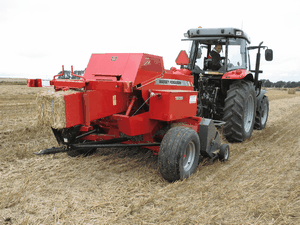Massey Ferguson launches new harvesting machinery

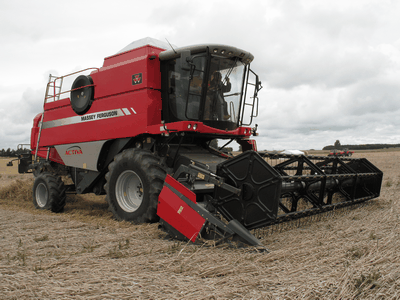
It’s not just Britain that’s had a tricky harvest this year. Danish farmers have been dodging the showers too, so it was no surprise to see some seriously laid wheat and UK-style drizzle at MF’s recent launch in Denmark.
Nonetheless the machinery kept going long enough to give a good clue as to what it would be capable of in normal conditions.
COMBINES
First into the crop was the new Activa 7245S combine (above, in wheat that was flatter than an Ikea rug). This and its auto-levelling sibling, the 7245S AL, are five-straw-walker machines with 245hp engines and four-speed transmissions.
Though the AL is the machine for real hillside work, both models have headers that can follow changes in ground contours of up to 8%.
There’s also a new powerfeed roller that gives a constant crop flow between the table and the main crop elevator and a rotary separator with an adjustable concave.
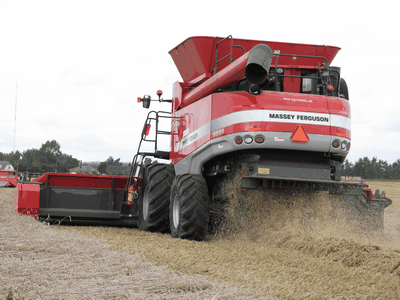
Next into the ring was MF’s interesting-looking US-made 9895 rotary combine (above, working in some seriously laid wheat, too).
It’s a step closer to going on sale, but potential buyers in the UK will still need to be patient.
A batch of models will be going out for customer evaluation next year, but it could be 2009 before they’re on the market.
The lag is due to the need to adapt the US specification to European working conditions, where yields, moisture contents and weather are different.
Nonetheless the 9895 has worked well in some pretty tough-going conditions, says MF’s Adam Sherriff, and has the potential to be a real harvesting powerhouse.
It’s equipped with a new 9m (30ft) Powerflow table (below) and, at 0.8m wide and 3.55m long, has the largest axial rotor in the industry. It’s also said to be gentle on the straw and capable of low harvesting losses.
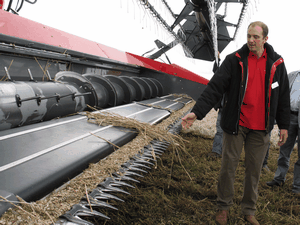
The 12,300-litre grain tank is just about the largest on the market and unloads at an enthusiastic 158 litres/second to give an emptying time of just over a minute.
Maintenance requirements are said to be low, too, with a relatively modest 13 main belts and just three chain drives.
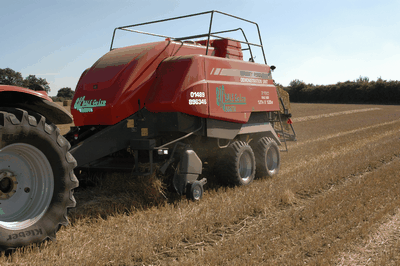
BALERS
MF-badged big balers, which are made at the Hesston plant in Kansas, have had a major revamp this summer.
Out go the 185, 186, 187 and 190 models, in come the 2150, 2160, 2170 and 2190 which went on sale on 1 August.
Massey chose to show off the big 2190 machine, which makes bales 10-20% heavier than its predecessor and can work at an acre-gulping 19kph (12mph).
This machine produces 120 x 128cm bales and comes on single or self-steering tandem axles.
In fact the picture above is of a 2190 with tandem axle being run at Lutton farms, Peterborough by Big Bale South, which both sells and hires out MF big balers.
It has been running one since the end of August and reports that it has been getting typical bale weights of 625kg (compared to 500kg with the old model) and forward speeds are 17-18kph (20-30% faster than the previous model)
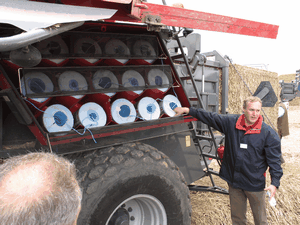
Other key changes are increased twine ball storage (30 in total – see above), a new independent on-board hydraulic system, 2.26m four-auger pick-up, heavier flywheel and fewer grease points
MF has also given a gentle makeover to its increasingly popular MF1839 Hesston-made small baler (below). There’s still a strong market for this size of baler among hobby farmers, horse-owners and those supplying the horse feed market.
